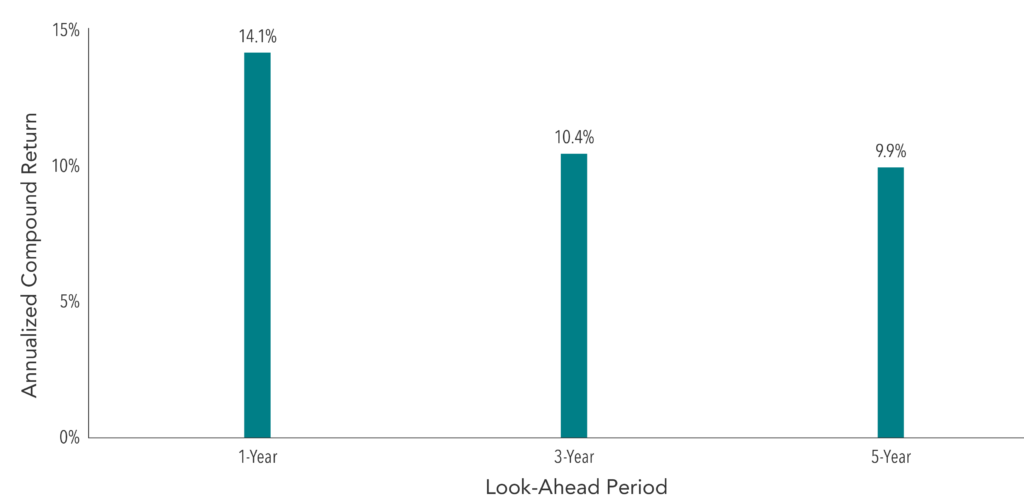“The important thing about an Investment Philosophy is that you have one you can stick with.”
– David Booth, Founder and Executive Chairman of Dimensional Fund Advisors
Last week markets continued their slide as investors fled equities for safer-haven assets like U.S. Treasury Bonds. The buying pressure of US Treasuries caused the interest rates on these bonds to decrease. It’s important to remember that bond prices and bond rates (also called yields) move inversely to each other; as more investors push up the price of bonds, yields will decrease. The opposite happens when investors sell out of bonds and buy equities. In spite of all of this, we believe a reliance on an investment philosophy is crucial.
What’s driving the direction of both bond and stock markets?
Two words: Tariffs, FED.
That’s been the name of the game over the last 18+ months, and at times, I feel like we are repeating the same ole song and dance.
A few months ago, the difference between the 3-month and 10-year Treasury bond yield went negative for the first time since 2007. The financial media took this as a sign of imminent recession; however, we maintained the stance that no recession was in sight. On Wednesday, August 14th, the difference between the 2-year and 10-year Treasury bond joined the 3mo/10yr in turning negative. Economists call this negative difference an inversion of the yield curve. An inverted yield curve has preceded each of the previous 7 recessions. As of my writing this, global stock markets are not taking this news lightly – mid-day Wednesday August 14th, the major US indices are down around -2.75%. However, bond markets are signaling conflicting information.
There are a few components that we are continuing to monitor that may explain this inversion and why it doesn’t necessarily spell doom.
European Economic Weakness
Germany posted its first negative GDP results (-0.1%). Recall that a technical recession is two consecutive quarters of negative GDP. This would fit the narrative of a global economic slow-down. In addition, there’s rumors of trouble with a hard-Brexit plan from the EU. Add these issues to Italian Populist Party concerns and one has the makings of trouble abroad. But the US economy, by most measures, is still relatively healthy. Last Quarter’s GDP decreased to +2.1% from 1st Quarter results of +3.1%; well within the range of GDP reports over the last 9 years.
Market Expectations of Further FED Rate Decreases
Three weeks ago, the FED reduced the Federal Funds Rate after a multi-year period of raising rates. The last increase was December ’18. At that time, I believed (and still do) that the economy did not need that final rate hike. Markets felt the same sentiment that caused the rest of December’s rapid market decline. It wasn’t until the FED signaled a cautionary policy in moving rates going forward (i.e. data dependency) that stock markets rebounded to 2019 highs between January and July. And if by political pressure, the FED essentially removed the December rate hike through its rate decrease last month. The FED called it a “mid-cycle adjustment” however, investors wanted more and still do. The question remains if the recent market turmoil and additional tariff action by the Trump Administration will force the FED to reconsider their stance. We almost have to question if one is driving the other? As of today, the bond markets are pricing in a 100% chance of another 0.25% rate cut in September. This pricing in may be the sole reason for the yield curve inversion. Remember that we believe (1st Pillar of our Investment Philosophy) all available information and expectations of the future are reflected in market prices. If investors are expecting the FED to reduce rates, it only makes sense that current rates would also decrease. Yield Curves have historically inverted due to tight monetary policy – that isn’t the case today. And why is no one talking about the $1.4 TRILLIONS of dollars in excess reserves still flooding the system? US monetary policy is not tight by our measures and some would say it’s simply, less-loose.
Why First Trust Portfolios says “This Is Not 2008”
Tariffs
The Trump Administration recently removed some tariffs and delayed others until Dec 1st. The mixed signals from President Trump explains much of the volatility in recent trading days. To say it has been whipsawed action would be an understatement. Markets were moving higher on signs of progress in trade talks with China but dropped significantly as a result of the inverted yield curve. As I’ve been meeting with clients over the last couple of weeks, I’ve explained the rationale behind why the world needs a successful trade agreement with China. To recap, I believe the global economy will benefit when trade secrets and other intellectual property are protected across country borders. These secrets are crucial to keeping capitalism and free markets alive. There remains an additional benefit to tariffs that hasn’t been discussed much – supply chain transitions to non-tariff countries. US companies with locations in China may be forced to transition their business to neighboring countries where labor costs remain low compared to the US but still comparable to China. If US corporations can strategically exit China to avoid tariffs, the Chinese economy may feel more pain than they are experiencing through a loss of jobs and tax revenue. This could be another pain point for the Chinese needed to force the US and China to meet in the middle on an agreement. The only concern I have here is whether the Trump Administration is ready to give a little ground to gain a lot of ground. If we look to President Trump’s twitter feed, I’m not certain he’s willing to capitulate on any demand. This, in my opinion, would be a mistake; negotiations become successful when two opponents meet in the middle.
Conclusion
We, as advisors, monitor these data points and concerns daily and we must remain focused, diligent, purposeful and unemotional in our approach to wealth management. Looking to the Investment Philosophy and the empirical evidence that is deeply rooted in academic science, each client’s portfolio strategy is designed with their financial goals, risk tolerance, and risk capacity in mind. For this reason, every portfolio is built with economic downturns, stock and bond market corrections in mind. It’s the primary reason we use fixed income assets to soften volatility. Recessions are a part of the economic cycle and avoiding them is not possible. It is highly provocative to imagine a strategy that gets out at the top of the markets and in at the bottom at precisely the right times. Imagine the money one could make and the emotional stress one could avoid with such a strategy? The reality is that such a strategy is impossible for humans to implement consistently and reliably and there is a plethora of data to support this impossibility.
Here’s what we will be/are doing for our clients. We believe that maintaining a consistent allocation to a globally diversified portfolio within your risk tolerance remains the most reliable method to achieving your long-term financial goals. To maintain this consistency, we rely on rebalancing techniques to keep allocations in-check as global markets move. This means that, at times, we’ll sell out of portions of one position and buy into others. We may also replace positions or add positions as necessary to take advantage of depressed prices and/or other opportunities. These actions aren’t meant to time the market, per se, but rather to ensure prudent management of our client’s investment portfolios.
Whether you’ve been a do-it-yourselfer or have been working with another financial advisor, maybe it’s time you consider a second opinion? Our phone lines are open, email inboxes properly filed and ready for your message. We’d love nothing more than the opportunity to sit down and show you why we’re different and how we believe our Investment Philosophy can help create calm during market storms.
Here’s how you can get in touch with us today.





